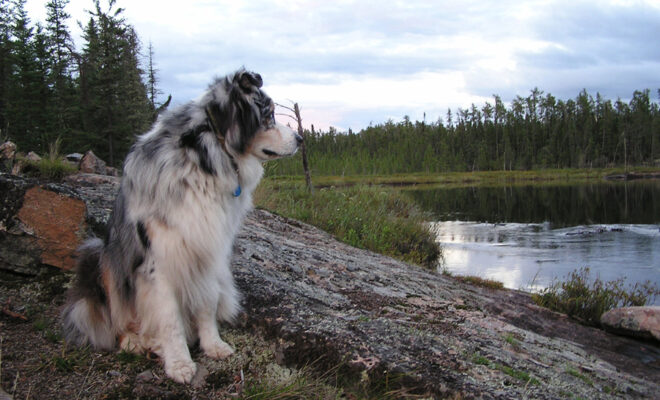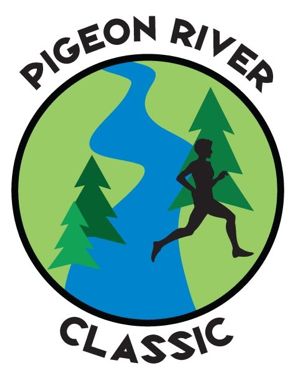Getting to Boreal Forest Heaven via Paddling: The Woodland Caribou Provincial Park

By Jason Maloney and Cindy Dillenschneider
[Please add your thoughts by scrolling way (way) down to the comments box. Thank you!]
Editor’s Note: This story is about adventure travel, for those seeking remoteness in their adventures. Without repeating their outstanding credentials in their Paddlesports for All story (July 2020 issue), contributors Jason Maloney and Cindy Dillenschneider are also an adventurous, extended-stay-in-the-wilds kind of couple. Here, Jason and Cindy show you where heaven can be found, by paddle, and how to better and more safely enjoy all the remote, motor-free beauty once you get there, over the border into Ontario.
(Click on photos to enlarge)
A million-acre oasis of boreal forest wilderness awaits you at Woodland Caribou Provincial Park, Ontario. Located about six hours north of International Falls, MN, two major rivers, the Bloodvein and the Gammon, run through the park, connecting some of the myriad of lakes located there. More remote than the Boundary Waters Canoe Wilderness Area, or Quetico Provincial Park, Woodland Caribou has around only 1000 visitors each year.
The Atikaki and Nopiming Provincial Parks, just across the Ontario border in Manitoba, adjoin Woodland Caribou to add another million acres to this vast area of protected boreal forest. Though it is possible to drive high-clearance, four-wheel drive vehicles to some launch sites, many visitors, especially first-time visitors, work with reputable outfitters and guides to plan trips and arrange transportation into and out of the park.
Outfitters and guides offer maps, equipment, including emergency communication devices, park permits, transportation arrangements, and essential information on coping in a wilderness boreal forest environment. It’s possible to engage air or ground transportation from Red Lake (Ontario) to the trailheads and some major lakes in the park. Much of the park is off-limits to motorized transportation, and this restricts where airplanes are allowed to land. The motor ban also allows silent sports enthusiasts to avoid motorboats inside most of the park.
Red Lake is the closest town offering ready access to the park. Visitors can go to the park headquarters in Red Lake to purchase camping permits and learn of current conditions such as water levels, fire warnings, and fire bans. Park staff can also provide helpful information on the condition of portages between rivers and lakes in different parts of the expansive park. They can also review campsite maps and answer questions about recent bear or other animal contact in the park. Other information you may need on road washouts or current park warnings and closures will also be available at the park office. Though a great deal of information is available on the Woodland Caribou Provincial Park website, you’ll find it useful to visit the park office prior to entering the park.
To cross the border into Canada, each person needs a valid U.S. passport, or a valid U.S. passport card. It’s also important to have a clean legal record. If you have doubts regarding your record, you should contact Canadian Customs before attempting to cross the border. You also should consult Canadian authorities regarding what you are allowed to bring with you into Canada. For your crossing back into the United States, you should consult U.S. authorities with the same questions.
If you plan to fish in Canada, you must obtain a provincial fishing license and an Ontario Outdoors Card. This can easily be done online prior to leaving the United States. Be sure to reference a current copy of the Ontario fishing regulations so you abide by all fishing rules. Camping requires a nightly permit, which can be obtained at the park office in Red Lake, or from reputable outfitters. A provincial park backcountry camping permit is only good for sites within the park boundary inside Ontario.
Remoteness-Seekers Paradise
A canoe, its crew, and their gear can be swallowed up in this vast, sub-arctic wilderness. Visitors can expect many days seeing no other people, especially in parts of the park off of the main canoe routes. In case of an emergency, it’s likely help will arrive by air. Depending on the weather, fire conditions, and the location of the emergency, help could be delayed several hours to several days.
Within park boundaries, about a thousand, primitive first-come, first-serve campsites come equipped with a stone fire ring, within which campfires must be built. There are no other amenities. Leave-no-trace camping techniques must be used, including bodily functions, so plan on packing out any garbage you produce. Learn how to dig and use a cat hole prior to your trip. Don’t be the thoughtless paddler who leaves disgusting toilet paper bombs for others to find.
If We Can Do It …
For the past decade, my wife, Cindy, our dog, and I (the canoe crew) have completed trips in the park ranging from 10 to 21 days. By packing carefully and taking essential gear, we were able to make most portages in two round trips per portage. We use Duluth packs lined with contractor grade garbage bags, and waterproof bags for gear and food.
The fishing in Woodland Caribou is some of the best in North America, and many people supplement their rations with freshly caught fish. Walleye, Lake Trout, and Northern Pike are abundant. We have found that, using National Outdoor Leadership School ration planning methods, with menu items including fruit and vegetables (which we dry ourselves), rice, pasta, nuts, and blocks of hard cheese, we can eat well without fishing. We do all of our cooking over a lightweight, single-burner camp stove. This allows for quick, hot meals even when dry conditions lead to bans on campfires.
Preparing for Fire Risks
Many parts of Woodland Caribou have had recent fires, not unusual in boreal forests. Fires have a major influence on water quality on some small lakes, and they can block portages with fallen trees.
While planning a trip, and also prior to entering the park, you should study where recent fires have burned and where current fires are burning. Most wildfires are started by the frequent lightning strikes from violent thunderstorms common in summer. Storms carry on prevailing winds from the plains of Alberta and Saskatchewan. Some storms with high winds and lightning appear with little warning, so a careful eye must be kept on the sky.
In recent years, large sections of forest have been killed by beetle infestation, leaving more fuel for wildfires. The prevailing winds can also carry wildfire smoke from as far away as British Columbia. When thick, such smoke makes breathing difficult.
The Wildlife Experience
Woodland caribou, moose, wolves, bears, eagles, spruce grouse, beavers, otters, loons and other waterfowl may reveal themselves to quiet paddlers, as they often have with us. Bears are common in the park. Because of frequent fires, many areas of the park do not have trees large enough to support a bear-hang used to protect food, and campsites are not equipped with bear boxes for food storage.
Storing and cooking food in areas well-away from sleeping areas, and keeping a clean camp, help mitigate danger from bears, but keep large canisters of pepper spray with you to repel bears that may approach. Because we keep a clean camp with food packed and kept well-away from sleeping areas, we have never had to use bear spray.
Keeping Track
Because it’s easy to become lost in a vast, boreal forest with few major landmarks, it’s essential to have adequate map and compass skills, and to have two sets of maps. Electronic gear can be useful, but the area is so remote, and failure of electronic equipment for any reason can put you in peril should you have no maps.
Native people who grew up in the boreal forest could easily tell one lake from another. For those of us who have spent a lifetime in modern environments, sometimes it’s nearly impossible to tell one pristine lake from another.
Though a wilderness adventure in a remote part of Canada may require more effort than a weekend camping trip, such an adventure provides rewarding benefits. On clear nights, the sky is spectacular, with the Northern Lights sometimes putting on a show. The only human-made sounds heard in areas where motors are not allowed come from an occasional jet passing far overhead. Traversing endless portages, lakes, and rivers, with few or no signs of human endeavor, is refreshing. The wilderness cleanses your mind and soul as it strengthens your body. After a few days of paddling, and developing the routine of making and breaking camp, you can come to know serenity of spirit.
A Sacred Place
Parts of Woodland Caribou are sacred to First Nations people in the area. Some First Nations people trace ancestors in the area back for thousands of years. In recent years, five First Nations, in Manitoba and Ontario, have been seeking World Heritage Site status for parts of Woodland Caribou. Visitors often come across pictographs which, along with the environment surrounding them, must be treated with respect.
The park has been special to people for thousands of years. Knowing some of the cultural heritage of the First Nations, which can be learned at the excellent heritage center in Red Lake, will enrich your travels.
A trip of a lifetime, Woodland Caribou Provincial Park provides personal challenges that give spiritual and bodily strength and renewal. The scenery and the sounds of nature can wipe away the cares of modernity. When you emerge from the wilderness back into our modern world, you will likely find, although little in the outside world has changed, that your inner world has changed, for the better.
For more information on Woodland Caribou Provincial Park visit:
www.ontarioparks.com › park › woodlandcaribou
For information on the Red Lake Regional Heritage Centre visit:
www.redlakemuseum.com
↓
You can subscribe and receive your print copy of Silent Sports Magazine AND have unlimited access to online stories @ www.SilentSportsMagazine.Com for under $2 per issue by contacting Lynn Schoohs: [email protected] or 715-258-4360, or online via: https://www.shopmmclocal.com/product/silent-sports-magazine/







